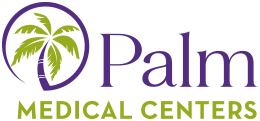Aortic Aneurysm
Introduction
Anatomy
The aorta extends upwards from the heart, arches, and travels downward through the chest and into the abdomen. These sections of the aorta are called the ascending aorta, aortic arch, descending thoracic aorta, and the abdominal aorta.
Causes
Symptoms
Symptoms of an abdominal aortic aneurysm include severe sudden pain in the abdomen or back. Your pain may be constant and spread to your buttocks, groin area, and legs. Your legs may feel numb and sense a pulsating in your abdomen. You may feel an abdominal mass or experience abdominal rigidity. Your heart may beat rapidly when you move from a sitting to a standing position. The skin may feel clammy and you may have nausea, vomiting, and shock.
Diagnosis
Treatment
Prevention
Am I at Risk
Risk factors may increase your likelihood of developing aortic aneurysm, although some people that develop the condition do not have any risk factors.
Risk factors for aortic aneurysm:
_____ Males experience more aortic aneurysms than females.
_____ Age over 60
_____ High blood pressure
_____ Smoking
_____ High cholesterol
_____ Obesity
_____ Emphysema
_____ Genetic factors appear to play a role in the development of aortic aneurysm.
_____ Atherosclerosis, hardening of the arteries
_____ Syphilis
_____ Marfan syndrome
_____ Trauma
Complications

Copyright © - iHealthSpot Interactive - www.iHealthSpot.com
This information is intended for educational and informational purposes only. It should not be used in place of an individual consultation or examination or replace the advice of your health care professional and should not be relied upon to determine diagnosis or course of treatment.
The iHealthSpot patient education library was written collaboratively by the iHealthSpot editorial team which includes Senior Medical Authors Dr. Mary Car-Blanchard, OTD/OTR/L and Valerie K. Clark, and the following editorial advisors: Steve Meadows, MD, Ernie F. Soto, DDS, Ronald J. Glatzer, MD, Jonathan Rosenberg, MD, Christopher M. Nolte, MD, David Applebaum, MD, Jonathan M. Tarrash, MD, and Paula Soto, RN/BSN. This content complies with the HONcode standard for trustworthy health information. The library commenced development on September 1, 2005 with the latest update/addition on February 16, 2022. For information on iHealthSpot’s other services including medical website design, visit www.iHealthSpot.com.






